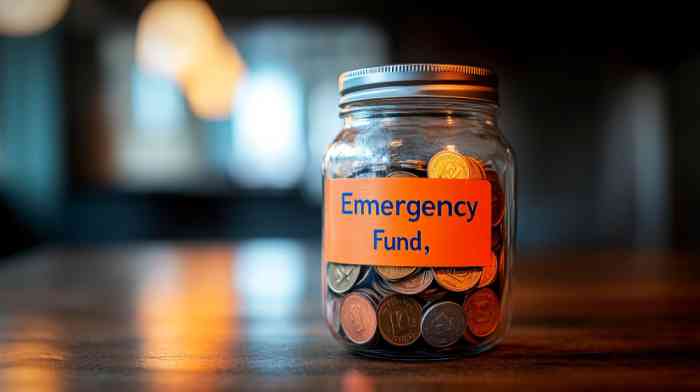Achieving financial freedom is a goal shared by many but accomplished by few. Financial freedom means more passive income than you need in life to pay your bills so you can live life on your terms without having to depend on a paycheck. It’s about building a life where money works for you. However, such a journey needs a step-by step process to exercise financial discipline and make sound investments, this journey requires disciplined steps, smart budgeting, and sound investments. In this guide, we’ll walk through each phase of the path to financial independence—from setting a budget and controlling spending to creating streams of passive income. Let’s dive in and get you started on this path to freedom.

What is Financial Freedom?
Financial freedom is the state of having enough personal savings, investments and cash flow to afford the lifestyle you want for yourself and a family without you having to actively work to earn money. It is the capacity to dictate your time, make decisions free of cost, and chase ambitions and aspirations devoid of the stress of finances.
Key Components of Financial Freedom:
- Emergency Savings: Enough cash on hand to handle unexpected expenses or emergencies.
- Debt Freedom: Elimination or significant reduction of debt.
- Passive Income: Income from investments or assets that doesn’t require ongoing work.
- Solid Investments: A diversified portfolio that provides growth, income, or both.
- Financial Security: Peace of mind knowing you have the resources to support yourself long-term.

Step 1: Define Your Financial Freedom Goals
Financial freedom means different things to everyone, and defining it starts with understanding what you truly want. Is it the ability to retire early, travel, or simply live comfortably without worrying about bills? Think about the lifestyle you’d enjoy, the costs involved, and how much you’d need in savings or passive income to support it. Break these dreams into specific, achievable goals—both long- and short-term. Clarity now builds the foundation for choices that lead to freedom later. Start small, stay consistent, and track progress.
Identify Your “Why”
Understanding why you want financial freedom provides motivation for your journey. It could be to:
- Spend more time with family
- Pursue personal passions or projects
- Travel extensively
- Retire early
Set Specific Financial Targets
- Retirement Number: Calculate how much you’ll need to live comfortably without working. A common target is 25 times your annual expenses, based on the 4% rule for sustainable withdrawals.
- Monthly Passive Income: Determine how much passive income you need to cover monthly expenses, such as rent, utilities, food, and entertainment.
- Net Worth Goal: Set a net worth goal, considering assets and liabilities, to give you a benchmark for financial independence.
Defining clear financial goals gives you a blueprint to follow, making it easier to stay focused and motivated.

Step 2: Track Your Spending and Create a Budget
Tracking your spending is the crucial step to financial control. Start by listing every purchase—yes, every coffee and online splurge. Then, categorize them to see where your money really goes. Once you know your habits, set realistic limits with a simple budget. Focus on needs, allocate for wants, and plan for savings. This isn’t about restriction; it’s about awareness and intention. Watching where your money flows helps you make smarter choices, reach financial goals, and feel in control.
Track Monthly Spending
For at least one month, track every expense in categories like:
- Housing (rent/mortgage, utilities)
- Food (groceries, dining out)
- Transportation (gas, public transit)
- Entertainment (subscriptions, activities)
- Debt Payments (credit card, loans)
Create a Budget and Stick to It
- 50/30/20 Rule: Allocate 50% of income to needs, 30% to wants, and 20% to savings and debt repayment.
- Zero-Based Budget: Assign every dollar a purpose, ensuring your income minus expenses equals zero.
- Envelope System: Use cash for variable spending like food and entertainment to limit overspending.
Budgeting helps reduce unnecessary expenses, allowing you to save more toward your financial freedom goal.

Step 3: Build an Emergency Fund
Building an emergency fund gives you a financial cushion for life’s surprises. Aim to set aside enough to cover three to six months of your essential expenses. Don’t worry about saving it all at once—small, consistent contributions make a big difference over time. Keep this money separate in a high-yield savings account, so it’s easy to access when you need it, and it grows a little faster. Having this safety net brings incredible peace of mind. Start now, even with just a small deposit, and give yourself the confidence to handle whatever comes your way.
How Much Should You Save?
- 3-6 Months of Living Expenses: Most experts recommend saving enough to cover three to six months’ worth of essential expenses.
- High-Yield Savings Accounts: Keep your emergency fund in a high-yield savings account for accessibility and modest growth.
A well-stocked emergency fund protects you from needing to rely on debt in times of crisis, helping you stay on track to financial independence.
Step 4: Pay Off High-Interest Debt
Debt can be a significant barrier to financial freedom, especially high-interest debt like credit card balances. Paying off high-interest debt is one of the smartest financial moves you can make. Start by tackling your highest-interest debts first, like credit cards, since these accumulate the most costly interest over time. Even small extra payments toward these balances can help you reduce the total you owe faster and save on interest. As you pay down each debt, redirect those payments toward the next one on your list. This approach, known as the avalanche method, helps you get out of debt sooner and with less stress. Freeing yourself from high-interest debt gives you more room to build real financial security.
Debt Repayment Strategies
- Avalanche Method: Pay off the highest-interest debt first, then work your way down. This method saves the most money on interest.
- Snowball Method: Start with the smallest debt and work upward, creating momentum through quick wins.
- Consolidation: Combine high-interest debts into a lower-interest loan or credit card to simplify payments and reduce interest.
By eliminating debt, you increase your cash flow and reduce stress, bringing you closer to financial independence.
Step 5: Increase Your Income
Boosting your income can be a powerful way to strengthen your financial future. Think about your skills and interests—could you turn a hobby into a side gig, or take on freelance work in your field? Investing in new skills or certifications can also open doors to higher-paying roles. Additionally, if you’re currently employed, explore opportunities for advancement or negotiate a raise based on your contributions. Every extra bit adds up, giving you more flexibility, freedom, and savings potential. Taking control of your income can be a game-changer for your financial goals—start where you can and build from there.
Ways to Boost Income
- Ask for a Raise: If you’re performing well at work, make a case for a raise to improve your primary income source.
- Side Hustles: Freelancing, consulting, or starting an online business can supplement your income.
- Invest in Skills: Upskilling in areas like coding, digital marketing, or data analysis can increase your earning potential.
Generate Passive Income
Passive income is key to financial freedom because it provides cash flow without active work. Consider:
- Dividend Stocks: Invest in companies that pay dividends for regular income.
- Real Estate: Buy rental properties or invest in real estate crowdfunding for passive cash flow.
- Royalties and Licensing: If you’re creative, explore licensing work (like music, art, or writing) for royalty payments.
Increasing your income gives you more resources to invest and build toward financial independence.

Step 6: Start Investing for the Long Term
Investing is one of the most effective ways to build wealth, also this is one of the smartest moves you can make for your future. Think of it as building wealth steadily, where time and patience work in your favor. Begin with what you can—no need for huge amounts. Focus on investments like diversified index funds or ETFs, which spread risk and grow with the market. Stay consistent, even if markets fluctuate; it’s the steady commitment over years that builds real value. The earlier you start, the more you benefit from compounding returns. Your future self will thank you for taking that first step today.
Investment Vehicles for Financial Freedom
- Stock Market: Stocks have historically offered high returns over the long term, especially if you focus on index funds and ETFs for diversification.
- Real Estate: Rental properties provide consistent income and long-term appreciation.
- Retirement Accounts: Contribute to tax-advantaged accounts like 401(k)s, IRAs, or Roth IRAs to grow your savings with tax benefits.
Stay Consistent and Diversified
- Dollar-Cost Averaging: Invest a fixed amount regularly to reduce the impact of market volatility.
- Diversification: Spread investments across various asset classes to minimize risk and enhance growth potential.
Long-term investing is essential to building wealth that lasts and helps ensure your assets will support you well into the future.
Step 7: Create Passive Income Streams
To achieve true financial freedom, develop multiple passive income sources to cover your expenses without relying on active work. Start by exploring options that align with your interests and goals—like investing in dividend stocks, real estate, or even starting a blog that generates ad revenue. You could also look at peer-to-peer lending or renting out assets you already own. The goal is to set up income sources that, once established, require minimal effort to maintain. Each stream adds to your financial security, creating more freedom in your life. Begin with one manageable idea, and watch how small steps lead to long-term gains.
Types of Passive Income Streams
- Real Estate Rentals: Rental properties can provide steady income, though they require initial capital and maintenance.
- Dividend Investing: Build a dividend portfolio to receive regular payouts from stocks.
- Peer-to-Peer Lending: Platforms like LendingClub allow you to lend money to borrowers, earning interest.
- Digital Products: If you have a skill, create an eBook, course, or software product to sell online.
The more passive income sources you have, the less you’ll depend on a traditional job, bringing you closer to financial independence.

Step 8: Protect Your Assets with Insurance and Estate Planning
Financial freedom isn’t just about building wealth; it’s also about protecting it, this is one of the smartest moves you can make for your financial future. Insurance shields you from unexpected costs, whether it’s health expenses, property damage, or liability. Evaluate the types you need—health, life, auto, or homeowners—to ensure you’re covered in key areas. Estate planning, meanwhile, secures your wishes for how your assets are handled later on. Draft a will, establish trusts if necessary, and assign beneficiaries so your loved ones are cared for according to your plans. Together, these steps create a strong financial foundation, giving you and your family peace of mind.
Essential Insurance Types
- Health Insurance: Covers medical costs, preventing debt from healthcare expenses.
- Life Insurance: Provides for your family in case of unexpected events.
- Disability Insurance: Replaces income if you’re unable to work due to illness or injury.
- Homeowners or Renters Insurance: Protects against property damage or loss.
Create an Estate Plan
An estate plan ensures your assets are transferred according to your wishes:
- Will: A legal document detailing how your assets should be distributed.
- Trusts: Useful for more complex estates, helping reduce taxes and protect assets.
- Beneficiary Designations: Update these on all accounts to avoid legal complications.
By protecting your assets, you secure the wealth you’ve worked hard to build, ensuring it benefits you and your loved ones.
Step 9: Monitor and Adjust Your Financial Plan
Achieving financial freedom is a dynamic process that requires regular assessment and adjustments. Keeping an eye on your financial plan is just as important as creating it. Life changes—jobs shift, expenses fluctuate, and goals evolve. By regularly reviewing your plan, you’ll catch any areas that need adjusting, whether it’s boosting your savings, reallocating investments, or revising budgets. Set a routine to check in on your finances, maybe every few months, so you can make tweaks as your priorities shift. This helps ensure your plan keeps pace with your life, giving you better control and flexibility. Think of it as fine-tuning your roadmap to stay on track toward your goals.
Regular Financial Check-Ins
- Monthly Budget Review: Assess your spending, savings, and investment contributions.
- Quarterly Investment Review: Adjust your portfolio based on market trends and personal goals.
- Annual Financial Goals Update: Revisit your goals and adjust as needed for career, family, or lifestyle changes.
Stay Adaptable
Be prepared to make adjustments based on unexpected events or new opportunities. A flexible approach helps you stay resilient and make consistent progress toward financial freedom.
Step 10: Maintain a Financial Freedom Mindset
Maintaining a financial freedom mindset means thinking beyond just paying the bills—you’re focusing on building lasting stability and choices for yourself. Start by setting clear financial goals, whether it’s reducing debt, investing wisely, or saving for big milestones. When you make purchases, ask yourself if they align with these long-term goals. Practicing gratitude can also help, shifting focus from what you lack to the financial progress you’re making. This mindset keeps you on track, reminding you that each smart choice adds up. Over time, this perspective becomes second nature, empowering you to create and sustain the financial future you deserve.
Habits to Build a Financial Freedom Mindset
- Avoid Lifestyle Inflation: Resist the urge to increase spending as income grows.
- Focus on Value: Spend money on things that bring long-term value rather than short-term gratification.
- Stay Informed: Educate yourself about personal finance, investments, and market trends to make informed decisions.
Your financial mindset is the foundation of your success, helping you stay disciplined and motivated as you work toward lasting freedom.
Final Thoughts on Achieving Financial Freedom
Achieving financial freedom is about creating the life you truly want—where money supports your goals rather than limits them. It starts with clear intentions, like paying off debt, building savings, and investing wisely. But it’s also about shaping habits that make a lasting difference, such as budgeting mindfully and setting realistic financial goals. Remember, progress doesn’t come overnight; it’s the sum of many small steps. Stay patient, celebrate your milestones, and keep learning along the way. Financial freedom isn’t just a destination—it’s a journey toward a secure, fulfilling future that you’re fully in control of.
Summary
Financial freedom is within reach with the right plan. Start by setting clear goals, creating a budget, and paying down debt. Increase your income, invest for the long term, and develop passive income sources. Protect your assets with insurance and estate planning, and regularly monitor your progress. With discipline and consistency, you can achieve the freedom to live on your own terms.